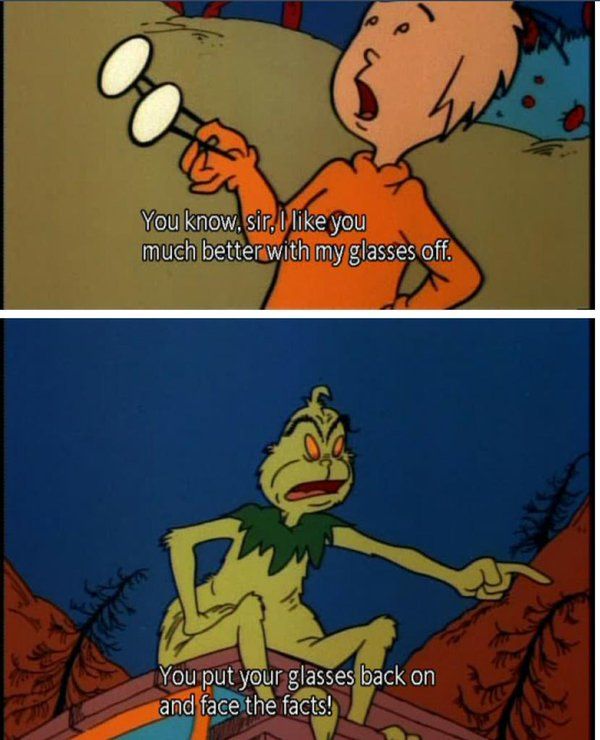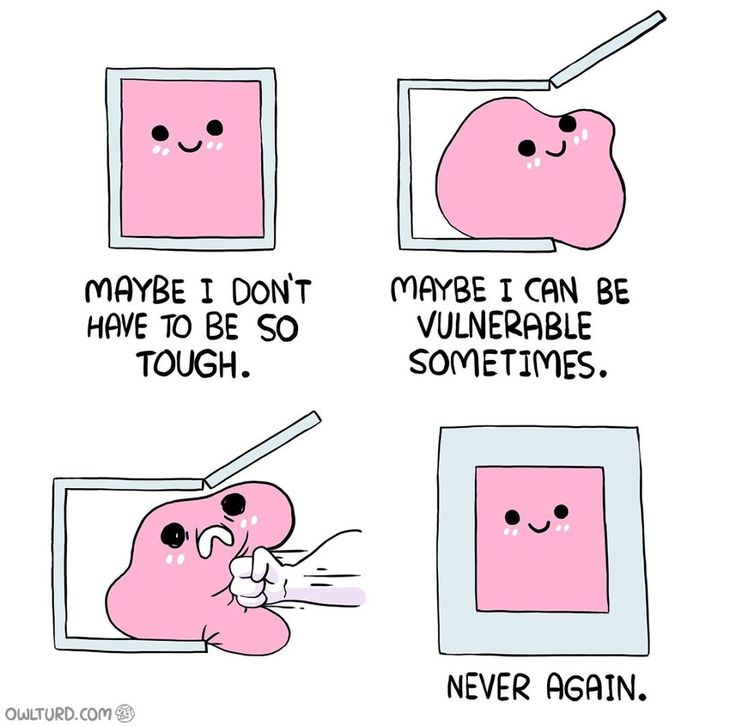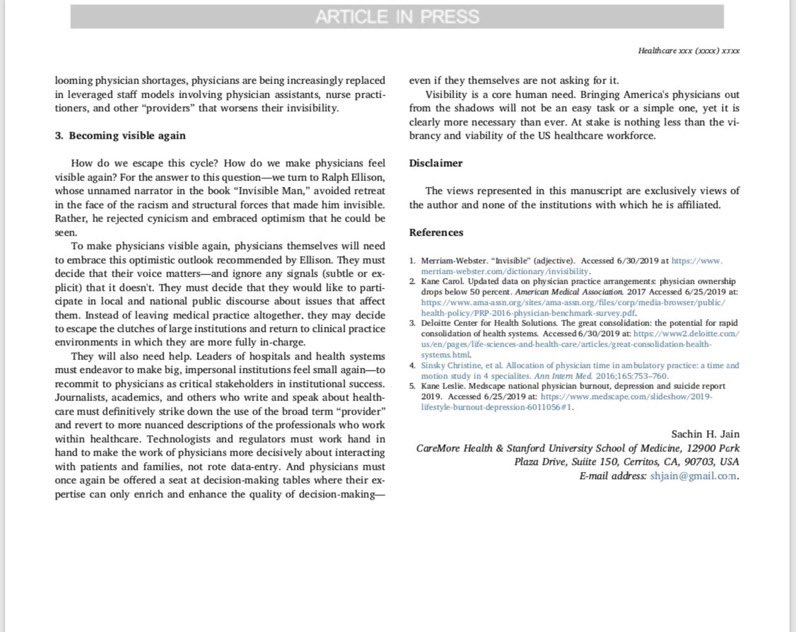Our windshields get extremely dirty – mud, dust, water, bugs, sap – you name it, the trail throws it at you. That’s part of the fun of why we ride. But you won’t get very far if you can’t see where you’re going. We need to clean them, often after every ride, without leaving them scratched and hazy. You know your windshield is tough – you’ve seen it survive repeated lashings from flinging branches and rocks – but did you know your windshield needs to be handled with care when it comes to cleaning. You can do a lot of permanent damage to your windshield if you don’t clean it properly. In this blog you will discover how to clean your UTV windshield. Depending on what type of windshield you have, may alter the method & products you use to clean with.
TYPES OF WINDSHIELDS:Most popular UTV windshields on the market are made from one of three products: glass, acrylic or polycarbonate.
Glass windshields are – you guessed it – made from glass, but there are a few things you need to be aware of when it comes to cleaning glass windshields. Most are actually a laminated glass, or safety glass, that holds together when shattered. Often, they have some form of coating, such as a tinting layer. It’s important to know the facts about your windshield so you don’t damage the coatings during cleaning.
Side note: Super ATV is now offering glass windshields for select Make/Model/Years. Discover one for your machine today.
Acrylic windshields (often referred to as Plexiglass or Lucite) are quite durable and scratch resistant when it comes to mud and debris you encounter on the trail. Acrylic is about 10 times stronger than glass, but don’t be fooled into thinking it’s indestructible. It stands up well, but a strong solid hit from a rock or branch could scratch it. Most of the time these can be polished out though. You want to be careful when it comes to cleaning Acrylic windshields as improper technique can result in permanent damage like haziness or scratches.
Polycarbonate windshields (like Lexan or Makrolon) are the strongest of the three materials, however they are very easily scratched. We recommend making sure your polycarbonate windshield is hard coated to make it resistant to scratching. Even with this protective coating, polycarbonate windshields are the most fragile to clean.
We recommend making sure your polycarbonate windshield is hard coated to make it resistant to scratching. Even with this protective coating, polycarbonate windshields are the most fragile to clean.
There are definite dos and don’ts when it comes to cleaning your UTV windshield.
Often what you think you can use does more harm than good. One thing you can do before heading out is prep your acrylic or polycarbonate windshields with a clear plastic polish or wax. This will make it harder for the mud and dirt to stick to the surface.
The best course of action for cleaning any type of windshield is to always use gentle, non-abrasive products. Here we highlight the best practices for the different windshield types.
Glass is the easiest to clean, however if you have any form of coating or tinting you need to be careful. We recommend a gentle soap, like dishwashing soap, and water. White distilled vinegar can be mixed with water to break down any oily grime that has built up over time, but you want to make sure to protect your dash with towels to avoid any damage. It may not be necessary with glass windshields but it’s still our best practice to use microfibre absorbent cloths to ensure optimal results.
White distilled vinegar can be mixed with water to break down any oily grime that has built up over time, but you want to make sure to protect your dash with towels to avoid any damage. It may not be necessary with glass windshields but it’s still our best practice to use microfibre absorbent cloths to ensure optimal results.
Avoid using abrasive or corrosive materials, scouring pads, powder-based cleaners like baking powder, or cream cleaners like Jif. Even regular glass cleaners like Windex don’t often work well on glass windshields as they don’t break down the grime well and they often contain ammonia which will remove or damage tinted coatings.
Glass windshields are now available through Super ATV. Acrylic WindshieldsAcrylic windshields need to be treated gently. Use mild soap and water, along with a microfibre absorbent cloth. If you’re not convinced that mild soap and water will get your windshield clean, one of the more popular polycarbonate and acrylic UTV windshield cleaners is Pledge Lemon Enhancing Polish Spray – it doesn’t contain alcohol or ammonia, doesn’t leave a waxy build-up and it’s affordable.![]() Cleaners like Brillianize Cleaner and Polisher can also safely be used to clean the windshield surface and reduce static without scratching.
Cleaners like Brillianize Cleaner and Polisher can also safely be used to clean the windshield surface and reduce static without scratching.
NEVER use paper towel or cleaners that contain ammonia, or abrasive cleaners, or even a dry cloth as these will permanently damage the surface.
Polycarbonate WindshieldsIf you have an uncoated polycarbonate windshield you need to be extremely careful – it will scratch very easily. Use a super-soft microfibre cloth and gentle non-abrasive soap. Don’t use a dry cloth and rinse off all dust and dirt before you begin cleaning.
Your better option is a coated polycarbonate windshield. It will still scratch easily if not cleaned properly, but it’s not nearly as fragile as uncoated polycarbonate. You want to use a gentle, non-abrasive soap, but you need to use a super-soft microfibre cloth. The softness of the cloth is important to prevent scratching.
People mistakenly believe that a polycarbonate surface can be cleaned the same way you would an acrylic one. It’s important to note that these are two very different products with different properties – polycarbonate windshields are much harder than acrylic to correct scratches or haziness. If you’re just sticking with mild soap and water then the cleaning is pretty similar. You just want to make sure to use a super soft microfibre cloth to avoid scratching. Products like Novus #1 Plastic Polish or Brillianize Cleaner and Polish are often recommended by polycarbonate manufacturers as they will safely clean your windshield when used with a soft damp cloth.
It’s important to note that these are two very different products with different properties – polycarbonate windshields are much harder than acrylic to correct scratches or haziness. If you’re just sticking with mild soap and water then the cleaning is pretty similar. You just want to make sure to use a super soft microfibre cloth to avoid scratching. Products like Novus #1 Plastic Polish or Brillianize Cleaner and Polish are often recommended by polycarbonate manufacturers as they will safely clean your windshield when used with a soft damp cloth.
Again, you NEVER want to use paper towel or cleaners that contain ammonia, or abrasive cleaners, or even a dry cloth as these will permanently damage the surface.
Damage to your windshield doesn’t just come from the cleaning products. It also comes from the way we clean. It’s important to follow these simple steps to maintain the longevity of your windshield.
Rinse off the windshield: make sure you thoroughly rinse off your windshield before you start cleaning. You want to have enough water pressure to get the caked-on mud and dirt off, so your windshield looks clean. Rubbing gritty dirt all over your windshield will only cause scratching and damage.
You want to have enough water pressure to get the caked-on mud and dirt off, so your windshield looks clean. Rubbing gritty dirt all over your windshield will only cause scratching and damage.
Wash the windshield with a mild/gentle soap, warm water, and a damp microfibre absorbent cloth. Always wipe horizontally from the middle to the edge – this will remove any leftover dirt and prevent it from being wiped over again causing scratches.
Rinse the windshield with clean water to get off all the soap and any remaining dirt. Make sure it is thoroughly clean and free of dirt before you move on to the next step.
You want to dry your windshield right away, so spots don’t form. Be sure to read this step carefully – there is a right way and wrong way to dry a windshield and the right way tends to defy our logic.
Never use a dry cloth to dry a polycarbonate or acrylic windshield, it will damage it – always use a damp cloth when you dry. Don’t wipe in circles – we are not polishing the car so there is no wax-on/wax-off motion needed.
Don’t wipe in circles – we are not polishing the car so there is no wax-on/wax-off motion needed.
Instead, make sure you wipe in a straight line – you want to wipe horizontally and use a clean section of the cloth each time. It’s better to go through a number of cloths making sure you get it right, than trying to navigate the trails with a scratched-up windshield. Take your time here.
The reality is that we can’t always wait until we’re home to clean our windshield. The trail throws a lot of things at us, and that means sometimes we find ourselves having to clean our windshield on the trail. It’s a good idea to carry a large squirt bottle filled with a solution of a mild detergent and water. Bring along several soft, absorbent microfibre cloths and enough water for the pre and post rinse. You want to make sure you follow the same steps as you would at home.
Mark Meyer Ice Racing at Cow Lake on Jan. 28, 2018.Proper maintenance and care are essential if you want your windshield to hold up over the long term. Let’s face it, windshields are an investment. You put a lot of thought and money into picking out the right one – you want it to last. It would really suck if at the end of the day you need to replace your windshield because you didn’t take care of it correctly.
Let’s face it, windshields are an investment. You put a lot of thought and money into picking out the right one – you want it to last. It would really suck if at the end of the day you need to replace your windshield because you didn’t take care of it correctly.
So, take the time to clean your windshield properly – it really isn’t that hard – and your windshield will repay you with a clear view for years to come.
Do you have any tips and tricks for how to clean a UTV windshield?
Share your cleaning secrets with our riding community by posting this blog on Facebook.
It’s super easy to do and you’ll be the first to hear about sales, promotions, upcoming events, more great blog posts like this, plus so much more.
We call it our UTV Canada Ride Tribe and we’d love for you to join hundreds of other riders who have already signed up, too!
Newsletter Sign UpFirst Name *
Last Name
Email Address *
Your polycarbonate windshield takes a beating. Just think of all the elements it comes in contact with through the course of a ride. Mud, dust, dirt, rocks, branches, and more—all of these things are inevitable when you’re hitting the trails, but none of them are good for your UTV windshield.
Just think of all the elements it comes in contact with through the course of a ride. Mud, dust, dirt, rocks, branches, and more—all of these things are inevitable when you’re hitting the trails, but none of them are good for your UTV windshield.
Keeping your windshield clean is important for many reasons. First and foremost, a clean windshield promotes visibility. We don’t know about you, but we like being able to see what’s ahead while we’re going 60+ MPH. But in addition to keeping you safe, a clean windshield just makes your machine look nicer. Proper care can also extend the life of your windshield, which leaves you with more money in your pocket.
Cleaning and caring for a polycarbonate windshield requires a very specific technique. Polycarbonate might be stronger than glass, but unless it’s hard coated, poly collects scratches more easily. That’s why you can’t just grab some Windex and bunched-up paper towels and go at it all willy-nilly. If you want your polycarbonate windshield to stay clean and pristine, there are some “dos” and “don’ts” that you should know.![]()
Proper windshield care starts with the right supplies. But before we get into that, let’s start by looking at some items you should NEVER reach for when cleaning a polycarbonate windshield:
All of these materials will wreak havoc on a polycarbonate windshield, especially if it’s not hard coated (more on that later).
So what can you use? Polycarbonate windshield care is actually really simple. You’ll just need a few basic items that you probably already have at home:
Once you have all of those things on hand, it’s time to start cleaning!
No fancy products needed when it comes to cleaning polycarbonate windshields! A mild dish soap or baby shampoo mixed with water does the trick.
Start by spraying your windshield with warm, soapy water. Even if you’re using the world’s softest, most non-abrasive cloth, you should never wipe your windshield down without spraying it first. Without water to soften all that dried-on muck, you’re really just spreading mud (which contains gritty sand) back and forth, which can damage your windshield.
The dirtier your windshield is, the more water you’ll want to use. And if the mud is really caked on, you might even need to let it soak for awhile before moving on.
Once you’ve coated your dirty windshield in water, use your microfiber cloth to gently wipe back and forth. Never use circular motions when cleaning polycarbonate. A back-and-forth motion is better because you’re pushing dirt to the sides, rather than dragging it around in circles—another potentially damaging habit.
Another helpful tip is to flip to a clean section of cloth after every pass. This helps you avoid trapping dirt particles in your microfiber cloth.
This helps you avoid trapping dirt particles in your microfiber cloth.
After you have gently wiped all of the gunk and debris off your windshield (and we can’t emphasize the word “gently” enough), it’s time to rinse. Gently (there it is again!) pour or spray water over the windshield to rinse all of the soap off.
Now it’s time to dry! To avoid collecting water spots, use a clean chamois and blot your windshield dry. The key here is blotting—don’t rub or wipe down your windshield with a chamois, because again, that could lead to unwanted scuffs.
It only takes some basic supplies and a few short, simple steps to take your polycarbonate windshield from muddy and messy to sparkling clean.Sometimes things get a little out of hand when riding (in the best way, of course) and you end up totally covered in mud while still miles from home. It’s fun, sure, but you still need a clear windshield to make it back.
Because cleaning a polycarbonate windshield requires such basic supplies, keeping it clean while on the go is a piece of cake. Just make sure you have these materials stashed away somewhere:
Knowing how to properly clean a polycarbonate windshield is one way to keep yours looking good, but it’s not the only thing you should be doing in terms of windshield care.
Here are some other tips for extending the life of your UTV windshield.
Don’t wait until your windshield is absolutely covered to clean it. You can wear that caked-on mud like a badge of honor on your machine’s body work, but regularly cleaning your windshield will keep it looking new for longer. Get in the habit of doing a quick clean after every ride, even if it’s not that dirty.
When you’re not riding, make sure to store your machine out of direct sunlight—preferably in a garage or shed. If you don’t have room in the garage, cover the windshield with a tarp or find somewhere shady. Ultraviolet (UV) rays from the sun can damage polycarbonate windshields over time.
If you don’t have room in the garage, cover the windshield with a tarp or find somewhere shady. Ultraviolet (UV) rays from the sun can damage polycarbonate windshields over time.
Treatments like SuperATV’s proprietary XR Optic Hard Coating greatly extend the life of a polycarbonate windshield. XR Optic provides unmatched scratch and abrasion resistance. It also offers protection against those UV rays we were just talking about, so you won’t have to worry about your windshield turning cloudy or discolored over time.
One way to extend the life of your polycarbonate windshield is to keep it out of the sun when you’re not riding. This can be done by parking it in a garage or using a windshield cover—or both, as seen here!Haven’t purchased a UTV windshield yet? SuperATV carries a wide selection of windshields in all different styles. Whether you go with full, flip, half, or rear, they’re all manufactured and packaged right here in Madison, Indiana.
When you drive at 20 km/h, even -15 feels great. Still a cold headwind. But many go and in much more serious frosts. And if it still snows, everything flies in the face, then it’s completely unfortunate.
What about glasses, balaclava, you ask? It is not always convenient and comfortable. If you have a mustache and beard, they can freeze to the balaclava, especially when you ride in severe frost. And if you unfasten it, there is no desire to put it on again: everything is frozen, crusty ...
So in case of severe frosts, you still need to stock up on removable shields and glass, and not earn sores and suffer from discomfort.
These are small things - glass, glove box, heated handles, battery, winch, etc. - but with them, movement is more convenient, not to mention the fact that they come in handy in difficult conditions.
1. The pusher moves not only left and right, but also up and down. Therefore, there is always a risk that the driver will be injured from too moving glass. There are no such problems with the ski module.
Universal ski module ULM
ULM for motorized towing vehicles of ANY MANUFACTURE with front wheel drive and caterpillar 500 mm
Order in 1 click
Ski module LM3-F Burlak-M / Burlak M2 / OPTI (front-wheel drive)
Ski module for front-wheel drive motorized towing vehicle with a base of 1250, 1450 or 1850 mm.
Order in 1 click
2. It remains to mount the glass on the steering wheel and cover the bottom with cloth, leatherette, tarpaulin. We have to sacrifice appearance. Yes, and protection from branches in many cases is rather weak. Appearance can be dealt with. But with branches, you can decide this way: use a plastic mudguard from a truck.
Yes, and protection from branches in many cases is rather weak. Appearance can be dealt with. But with branches, you can decide this way: use a plastic mudguard from a truck.
Materials :
Tools :
We will do everything in 2 hours of unhurried work.
In order for the glass to cover not only the face, but also the hands from wind and snow, it is better to move it forward, behind the wheel.
1. Measure a comfortable distance from the steering wheel to the protective glass.
2. Prepare 2 pieces of profiled pipe as long as the measured distance. And another longer segment: its length should correspond to the length of the steering wheel.
And another longer segment: its length should correspond to the length of the steering wheel.
3. Weld the short pieces to the long piece as follows.
4. Bend the long piece on the sides to increase the strength of the glass. If you leave the glass in a straight position, it will tremble in the wind like an aspen leaf.
5. Next, cut the glass to fit the blank.
6. Drill holes for the bolts in the workpiece and glass. Optionally, you can add a splash guard.
7. We fix the structure.
Soft glass snowstorm
Order in 1 click
High soft glass Buran
Order in 1 click
Soft glass Buran M
Order in 1 click
Soft glass Buran M high
Order in 1 click
Rigid glass Buran 3 mm
Order in 1 click
Rigid glass Buran 4 mm
Order in 1 click
Do you have any questions?
Call our experts to help you.
Your name:
Your phone:
Comment:
How to make a windscreen on a motorized towing vehicle in 2 hours with your own hands?
12345 0 Number of votes: 6
Artur » Feb 08, 2015, 19:58
The question has been tormenting me for a long time, I just forget to ask all the time: I often see a small windshield on scooters, ATVs. Why is it needed at all? On the one hand, it seems to be able to protect at speed from insects flying towards a meeting (although there is a helmet for this). But why is it needed if the rider's head is located exactly above this glass?
Back to top
Rihard » 08 Feb 2015, 20:08
By the way, an interesting question. I remember, for a long time with the guys in the village they drove the "Ural". On it stood healthy glass. Here it protects from the wind of the one who is driving. Depending on the dimensions of the rider, it can fully protect or partially protect. On scooters and quads, it serves the same purpose.
I remember, for a long time with the guys in the village they drove the "Ural". On it stood healthy glass. Here it protects from the wind of the one who is driving. Depending on the dimensions of the rider, it can fully protect or partially protect. On scooters and quads, it serves the same purpose.
Back to top
Skat » Feb 08, 2015, 22:11
A small glass is either just installed, or (most often) bought from hand or a new one with glass already installed. And then they are too lazy to remove it or simply do not pay attention to it, because it does not interfere. And there is essentially no benefit from it. That is, either install normal glass, or not install it at all.
Back to top
Fizik » Feb 08, 2015, 22:18
I can say for sure that when you go without a helmet, it really dampens the headwind at speed. And wearing a helmet doesn't matter at all. Now it's useless. Especially on a quad bike. When you go through the mud, it quickly gets dirty and reduces visibility.
And wearing a helmet doesn't matter at all. Now it's useless. Especially on a quad bike. When you go through the mud, it quickly gets dirty and reduces visibility.
Back to top
Pacman » Feb 08, 2015, 23:16
The advantage of glass can be appreciated in winter, when you ride at speed in the cold. It holds the cold wind well, so you freeze less. Of course, you can dress warmer, but that goes without saying. And with a long ride, even in warm clothes it gets cold from the headwind.
Back to top
Timer » Feb 09, 2015, 18:03
It seems to me that glass is not suitable for extreme and not very driving. Too dangerous when flipping and jumping. You can accidentally hit him. Yes, it will interfere. It's good for a quiet ride. But not more.
Too dangerous when flipping and jumping. You can accidentally hit him. Yes, it will interfere. It's good for a quiet ride. But not more.
Back to top
Rihard Feb 09, 2015, 06:15 PM
Too dangerous when flipping and jumping. You can accidentally hit him. Yes, it will interfere. It's good for a quiet ride. But not more.
This glass should be soft and bend well. Therefore, during coups, it is practically safe. Another thing is that no one puts glass for extreme driving. They are really very uncomfortable and it is very easy to knock on it when jumping. Pleasant little, although it is not hard.
Back to top
Shmel » 13 Feb 2015, 16:04
I have never ridden with glass. And now it became interesting how it protects from the wind. I dug up glass from the very first ATV in the garage, which I removed almost immediately after purchase. Not to say that it is too soft. At the weekend I will attach, ride, see how comfortable it will be with him.
And now it became interesting how it protects from the wind. I dug up glass from the very first ATV in the garage, which I removed almost immediately after purchase. Not to say that it is too soft. At the weekend I will attach, ride, see how comfortable it will be with him.
Back to top
Separator » Feb 13, 2015, 23:10
Glass should be either large so that you can completely "hide" behind it, or not at all. A small glass does not normally protect from the wind and simply does not look at all on the quadra. Large, too, in most cases does not look, but at least there is some sense from it.
Back to top
 A small glass does not normally protect from the wind and simply does not look at all on the quadra. Large, too, in most cases does not look, but at least there is some sense from it.
A small glass does not normally protect from the wind and simply does not look at all on the quadra. Large, too, in most cases does not look, but at least there is some sense from it. In winter, even a small glass provides some protection from headwinds. In summer, it doesn't matter, but in winter, cold air can blow through even fairly warm clothes. In this case, any glass will be useful. Accordingly, you will freeze not so quickly and you can ride longer.
Back to top
Return to ATV tuning, DIY, ATV tuning studio
Jump: Select the forum -------------------------------------------------------- ATVs of traffic ATVs, announcements of mud competitions, racing, discoveries assistance to beginner quadocyclists, advice of experienced guru communities of ATV ATV ATV ATV communities , find a company for ATV rides Club quad rides, quad bike clubs unite and communicate on kvadro.